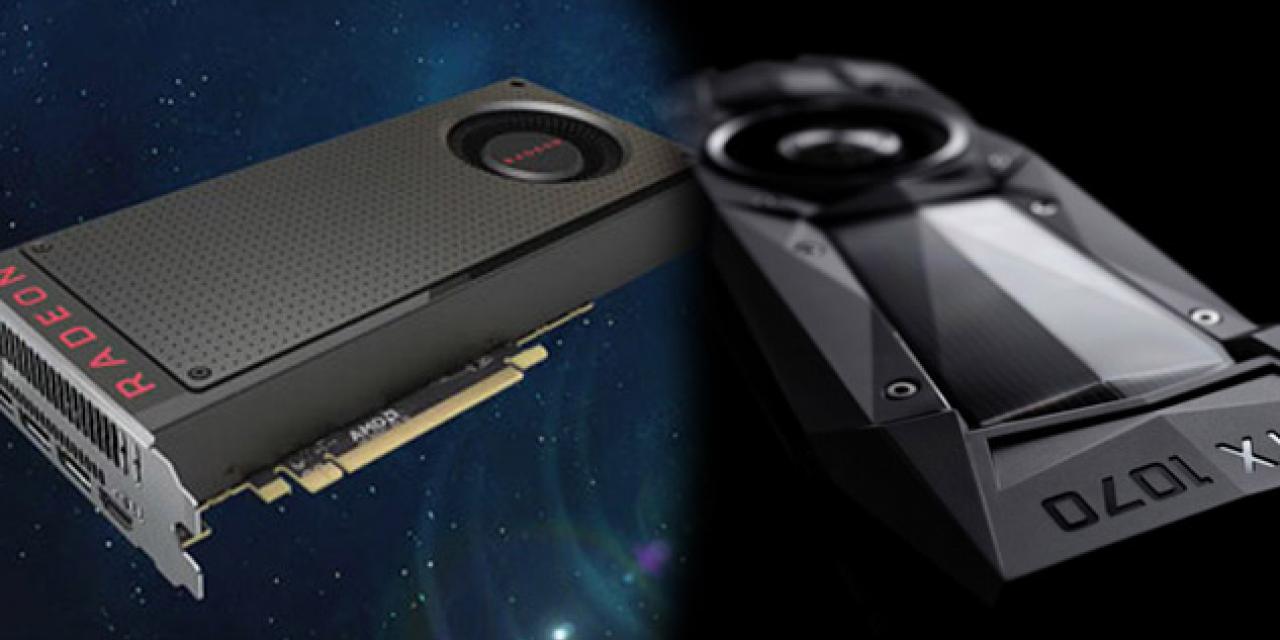
Although there are many battles fought, won and lost in the never ending scuffle for consumer money in the hardware world, if you're buying yourself a new graphics card this year, there's only one that should really concern you: the battle between Nvidia's 10 series GPUs and AMD's RX series cards.
This is a battle that's been fought every year for the better part of two decades and though the names of the combatants have changed and the competition isn't always as stiff as it has the potential to be, there is usually a hotbed of discussion from fans and analysts alike, about which option is best.
What's interesting about the graphics card war though, compared to other platforms or hardware contests, is that what the different companies offer is drastically different. Traditionally AMD has offered much more affordable mid-range products, with weaker driver support and hotter-running cards, while Nvidia has provided absolute performance, but at a premium.
Those same metrics are present with this generation's battle, but are more pronounced and there are some really interesting variables which could sway the tides one way or the other.
To start off our dissection of this latest battle, we'll look at the first graphics cards from both companies that have been released so far. In the case of Nvidia, it's the GTX 1080, an absolute monster of a card that makes big leaps ahead of the last generation. More powerful than even the $1,000 + Titan Z graphics card, the GTX 1080 is a real powerhouse and it does it at a fraction of the power requirements of last-gen Maxwell cards, while running cooler and quieter too.
It is a fantastic card and in-reality, the only graphics card more powerful than it is the AMD R9 295X2, which with its twin GPUs is an absolute monster, but struggles at higher resolutions, even if it can still draw ahead of the GTX 1080 occasionally.
As it stands though, as great as the GTX 1080 is, it has two major flaws: the first is that it's ungodly expensive. This isn't Titan money, but at around $800, it's well out of the reach of almost all gamers. The second problem it faces is availability. It's almost impossible to find any of these cards in stock anywhere, which has led to the ones that are available being sold for $900+ as scalpers look to take advantage.
Moving over to AMD, the one card it's debuted from its new generation is the RX 480. A much more respectably priced $200 GPU, this card is however much less powerful than the Nvidia powerhouse. In terms of performance it operates somewhere between the GTX 970 and GTX 980, though at a price point that's lower than both of them, depending on where you buy it.
It's also much cooler, quieter and uses far less power than previous AMD and Nvidia generations, which is a big step for AMD as that is somewhere it's usually quite weak. It is also available in large quantities, something that Nvidia is struggling to match.
Now obviously these two cards are just the tip of the iceberg and they target two distinctly different sectors of the market. AMD is going after the mid-range, where the majority of gamers reside, while Nvidia is aiming to capture the performance crown again – which it has done quite easily.
This is just the first salvo though. How will each respond to the other in due course?
AMD has announced the RX 470 and 460, which will likely offer the $150 and $120 price points more restricted cards, though potentially still VR compatible hardware – making the entry point for virtual reality far lower than it has been to date.
Nvidia on the other hand has a GTX 1070 on the way too, but its availability is just as poor as the 1080s and still targets that upper-range of the market.
We're going to have to wait until the GTX 1060 shows up for a really competitive part for AMD's current like up.
So what about the top end for AMD fans? The RX 480 is a capable card, but it's outshone in some scenarios by previous generation's Fury and Fury X cards.
For the first high-performance card, we're expecting an RX 490 at some point in the next couple of months. It's unlikely to take the fight to the GTX 1080 though, as powerful as it may be.
For a truly powerful AMD card, we're going to need to hold tight for Vega. Not expected to show up until early 2017, Vega will have double the Graphics Core Next cores as the RX 480, will feature High Bandwidth Memory 2 and should have absolutely monstrous performance – possibly even beating out the GTX 1080. Some have suggested it could go toe to toe with the expected GTX 1080Ti, whenever that is released – but we'll have to hold off on that sort of speculation, as it would be a real surprise if AMD was that competitive.
As it stands though AMD is doing what it does best and targeting the much more lucrative mid-range. Its RX 480 is a wonderfully capable card, with decent VR performance and a very attractive price point. While Nvidia's cards are much 'better' on many scales, they are hard to get hold of and hard to afford.
Which range of GPUs are you looking at for your next upgrade?
